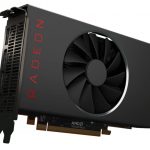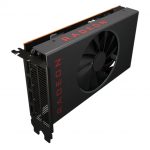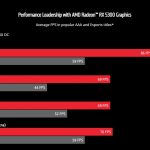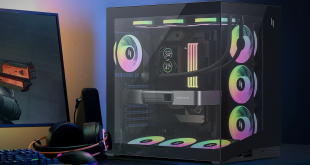AMD has just launched the Radeon RX 5300 out of nowhere. Ready to set the “new standard for entry-level 1080p gaming”, the Radeon RX 5300 is the direct rival to Nvidia GeForce 1650. This graphics card is powered by 7nm RDNA architecture and features the Navi 14 GPU paired with 3GB of GDDR6 memory, delivering “extremely efficient, ultra-responsive, gaming performance.”
The Navi 14 GPU used in the RX 5300 has the same stream processors count (1408) and compute units (22) as the one used on the RX 5500 XT. The 3GB of GDDR6 memory is clocked at 14Gbps and use a 96-bit memory bus, resulting in a maximum bandwidth of 168Gbps, 25% less than the RX 5500XT. With a core frequency that boosts up to 1645MHz, the Radeon RX 5300 has a peak single-precision compute performance of 4.63TFLOPs. This graphics card offers 3x DisplayPort 1.4 and an HDMI 2.0 port to connect to a display. Additionally, it supports PCIe 4.0 and has a rated TGP of 100W.
Like most modern AMD graphics cards, the Radeon RX 5300 support AMD FreeSync to offer a tear-free experience on compatible monitors. To ensure the latest available drivers, users should install the AMD Adrenalin software to unleash the GPU's full potential “with day-0 drivers” to optimise the latest games and customise your gaming experience.
Thanks to the RDNA architecture, the AMD Radeon RX 5300 supports Radeon Image Sharpening and Radeon Anti-Lag technology. According to the data shared by AMD, the RX 5300 is, on average, 38% faster than the GeForce 1650.
Pricing and availability details were not shared yet. It's expected that this graphics card will be available for OEMs only. You can learn more about this graphics card HERE.
KitGuru says: Would you like to see this card available in retail? Would you choose it over the Nvidia GeForce 1650?
 KitGuru KitGuru.net – Tech News | Hardware News | Hardware Reviews | IOS | Mobile | Gaming | Graphics Cards
KitGuru KitGuru.net – Tech News | Hardware News | Hardware Reviews | IOS | Mobile | Gaming | Graphics Cards





